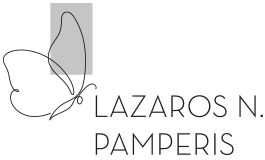INSTRUCTIONS FOR USE OF THE APPLICATION FOR THE RECOGNITION OF BUTTERFLIES OF GREECE AND COMMENTS FOR THE RECOGNITION OF CERTAIN SPECIES
Automatic butterfly recognition is based on comparing the user’s photo with the photos embedded in the application base. In order for the identification to be more accurate, the photos that are posted must have certain characteristics and others must be absent, such as those described below:
- Have the butterfly properly focused.
- To be properly lighted, that is not to be dimly lighted or over lighted and the light to have the right temperature. The light in the morning and in the afternoon is warmer and changes the colors as well as the cloudy. This can be avoided by using a flash. Flash lighting captures the true colors of the wings. Natural light captures (depending on whether it is morning, noon or afternoon) other different colors, which are not always the same as the real ones.
- The wings should be evenly lit or at least some shadows should have little contrast and occupy a small part of the wings. Strong shadows are sometimes perceived by the application as marks on the wings.
- When the natural light is backlight from the butterfly then sometimes the marks on the upper surface of the wings may appear together with the marks on the lower surface of the wings. This may affect recognition.
- The butterfly occupies the largest part of the photo. If the wings are not intact, ie if parts of them are missing, the recognition is affected.
- If grass or other plants are inserted and cover the wings, they are perceived as markings on the wings and recognition is affected.
- In very old butterfly individuals, who usually have all the features less obvious, recognition is also affected.
- If the individual of the butterfly, which is uploader for identification, has abnormally extended wings (accidentally or is dead from collection) also the identification is affected.
- If the individual of the butterfly has abnormally developed signs or colors, which deviate (aberrant) from those of normal individuals, the recognition is also affected.
- The choice of the frame (crop) for recognition, sometimes, can affect the recognition, because it depends on the existing photos in the base, which do not all have the same frames. It is recommended to seek recognition with different frames, so that the final decision is made by the user with greater security.
- Identification can be done with greater certainty when more than one photograph of the same individual of the butterfly, taken from different angles, is uploaded for recognition, so that there are identifications, through the application, for all photographs of the same individual, in which the characteristics of all the surfaces of the wings will be shown.
The limits of photo identification have been described in the book THE BUTTERFLIES OF GREECE (with the note Identification uncertain) for the species: Pieris napi, Pieris balcana, Colias erate, Leptidea sinapis, Leptidea juvernica, Melitaea athalia, Melitaea ahaarch, senthes, Hipparchia volgensis, Pyrgus alveus and Pyrgus armoricanus.
Η Recognition accuracy can be further improved by adding more butterfly photos to this database, with proper identification of the species by its users. Users are invited to upload their photos for identification and if they wish to send their photos for registration in this application, because the more photos registered in it the greater the accuracy of the identification. Users are invited to upload their photos for identification and if they wish to send their photos for registration in this application, because the more photos registered in it the greater the accuracy of the identification.
Some of the 236 species of butterflies in Greece are presented in groups (complexes) because there are limits to the recognition with photos with this Artificial Intelligence (AI = Artificial Intelligence) and at the moment it is not possible to identify at the species level:


